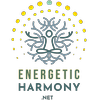 What’s a trapped emotion? And why is it so important to process this energy in a healthy way?
What’s a trapped emotion? And why is it so important to process this energy in a healthy way?
When we talk about “trapped emotions,” we’re really referring to the energy of an emotion. And without healthy, intentional ways of dealing with what life/work throws at us, that energy can get stuck in our energy field, or even our physical tissues. (I’ll explain that shortly.)
But first, to help illustrate what I mean by “the energy of an emotion,” we need to get a little science-y and start with the basics.
Bear with me.
What is an emotion, really?
To understand this, we first need to make the distinction between emotions and feelings. Those terms are often used interchangeably, but they’re not exactly the same.
An emotion is an automatic (subconscious) physiological response to a stimulus.
A feeling is sort of like our (conscious) interpretation — how we decode and also feel about — having that emotion (physical response).
And like everything else, they’re BOTH “energy.”
For example, if somebody jumps out at us from around the corner, the initial knee-jerk reaction (emotion) would be to jump and get really tense.
Let’s call that emotion “startled.”
That emotion automatically manifests as physical “tension,” e.g., the physical response of our shoulders and eyebrows raising, our gut tightening, etc.
Do you follow?
Moving on then, how a person feels about that physical response varies between us.
For instance, when I get startled, I might feel fear. But you might feel amused or some combination of things.
That’s why one person can feel one way watching a TV show, but another person can feel completely differently.
This is also how we know that no one else can control our emotions.
Make sense?
If not, leave a comment.
If so, keep this in mind as we talk about emotional energy.
Where is trapped energy stored?
Remember the tension we experienced when somebody jumped out at us from around the corner?
If we constantly have experiences that spark a particular physical response, especially if the body never gets to recover from those repeated physical responses, then that tension can get stored in the back of our neck or our hips (for example).
In the hips…
The psoas muscle –– a primary hip flexor — is where a LOT of tension is held.
So much so that this hip flexor is actually referred to as the “fight or flight muscle” in trauma psychology: because it tenses up when we are under stress (ready to fight or flee).
This is what it means to say we can “store trauma or stress in our hips” – it’s the energy of that physical response (emotion) being stored in our body. (But to avoid going into all that when we’re making other points 😅… we just say “trauma gets stored in the body!”)
…and literally anywhere else.
Emotional energy can get stuck, or trapped, anywhere in our physical tissues or energy body. Every living thing, and some nonliving things, are surrounded by an energy field or “energy body.” Some call this the aura.)
In a similar way, this is how an emotion can get trapped. It’s basically the energy of a certain emotion.
Here I’m making the distinction between the aura and the physical body. But they’re both still energy, just in different forms.
(I know. 😥)
Making it Make Sense:
Let’s say you witness a tragic accident. In that instant, your body releases a cascade of stress hormones. Your sympathetic nervous system kicks into high gear, preparing you to fight, flee, or freeze.
If you can fully express and release those emotions through crying, shaking, or other cathartic means, that energy dissipates naturally.
But if you (consciously) suppress those emotions, or they get repressed (unconsciously), that energetic charge can get “stuck” in your physical body. Either way, soon after, or even years later, it can manifest as muscle tension, digestive issues, headaches, or even chronic pain or illness.
Frustration has a certain energetic signature, as does anger. It’s said that different organs and body parts generate uniquely different categories of emotions. We’ll go into that in another article.
But at least, now you understand how “fear” or “anger” can get trapped, and get trapped in a certain place. Right?
The important thing is to remember that everything in our universe is made of energy, including our thoughts, emotions, and physical body.
Now that I’ve taken you in enough circles… let’s move on. 😅
So, how does an emotion or its energy get trapped?
As we’ve just said, an emotion is just another form of energy. And this energy can get stuck when we don’t allow it to flow through and process in a healthy way.
This happens usually because we haven’t let the emotion naturally run its course.
Sometimes, this is conscious and willful, like when we don’t let ourselves feel a certain way.
But other times, we might semi-consciously 🙃or even unconsciously deny feeling a certain way.
For example, if a friend gets married and we’ve been waiting for our own proposal (or proposal acceptance!)… we might feel a bit of something negative.
Maybe it’s not jealousy, but it could be envy, anger, or frustration.
We might think, “Wow, what kind of person would I be to feel angry about Susie getting married? I’m not that type of person!” So, we might relabel it as something more aligned with what we view as our identity.
Those are the more conscious ways emotions get trapped.
But there’s also an unconscious way.
We experience tons of emotions every day, and we’re not aware of most of them. Sometimes, we honestly just don’t notice our emotions because our mind is elsewhere.
For instance, let’s say someone cuts you off in traffic and you feel scared and frustrated that this fool put your life in jeopardy.
But maybe, in that moment, you’re too focused on a big work issue, or a relationship problem, to really even notice it, much less process it.
That’s how an emotion can get trapped unconsciously.
And so, we use modalities like the Emotion Code to help you release this stuck “stuff” in your tissues that could cause career issues.

Leave A Comment
You must be logged in to post a comment.